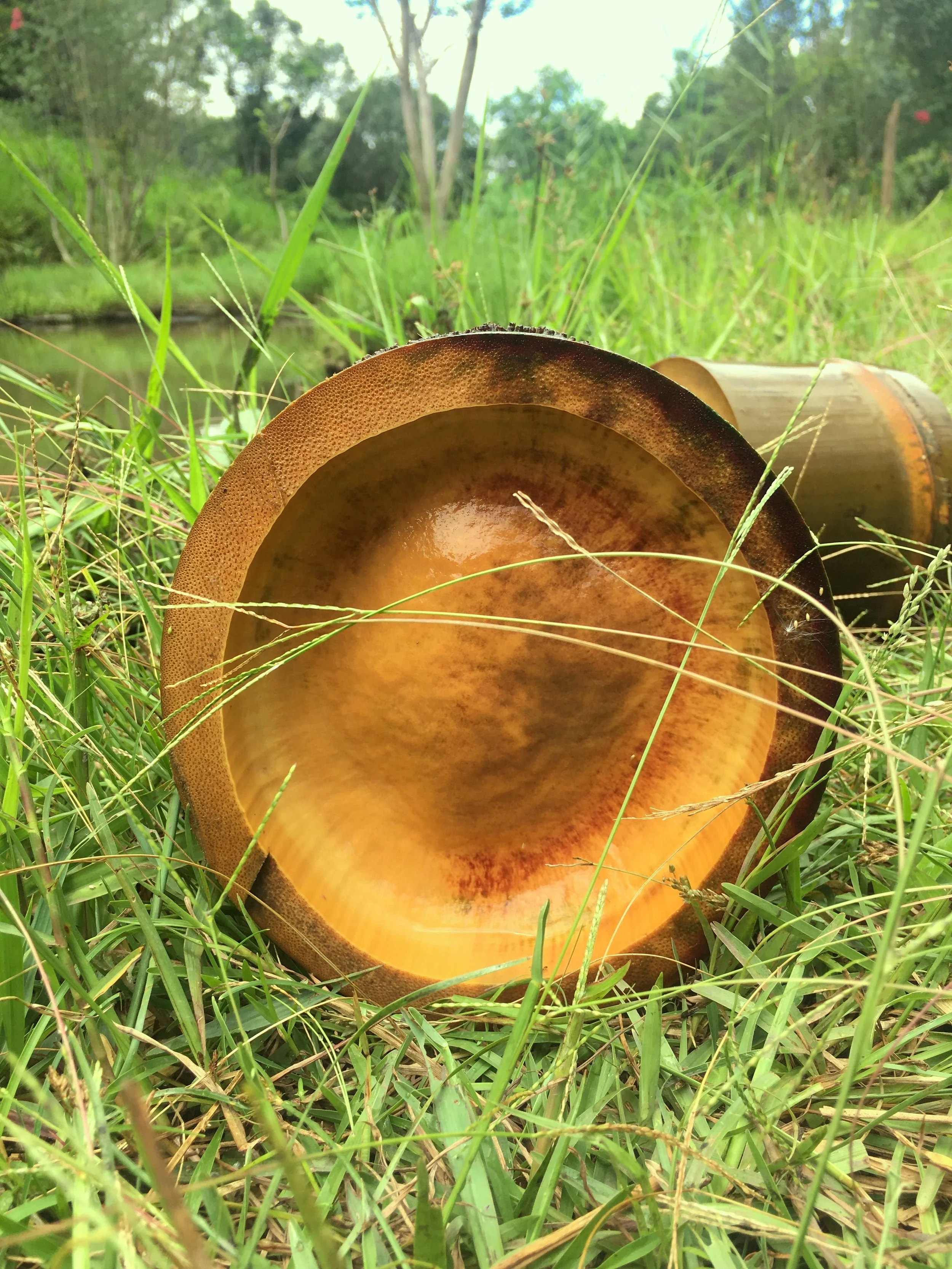“Working with bamboo is a dialogue—a process of listening, adapting, and co-creating rather than merely using the material.”
— Collaborating with a plant
Keeping it natural
My journey began with the hands-on experience of gathering bamboo—an experience that offered me a deeper understanding. I learned not just how and when the locals harvest bamboo but also why timing and process are so essential.
-
This immersion allowed me to attune to the rhythm of bamboo, shaping both my perspective and the possibilities of my work. It deepened my commitment to preserving its inherent structure and natural properties, leading me to explore traditional curing methods. Through research and practice, I discovered how water, air, sun, and smoke—applied methodically over time—play a crucial role in transforming bamboo. I moved with the land and the changing seasons, allowing nature to guide my process. After carefully navigating each stage of curing, the fresh green bamboo slowly evolved into a golden, tactile material—one that remains in harmony with the circularity of nature.
Bamboo-driven design
Bamboo-driven design differs from material-driven design in that it highlights the plant itself and emphasizes both its natural attributes and unique characteristics.
-
In my creative process, I transform bamboo into objects that celebrate the plant's inherent structure. My artistic approach seeks to reveal the bamboo's inner beauty—a beauty that often goes unnoticed.
In my work, the bamboo’s culm walls, diaphragms, and nodes serve as key design elements. Some pieces emphasize the striking beauty of its fibers, showcasing the unique variations found across different species.
Celebrating nature’s imperfections
Cracks are the authentic marks, representing the material's journey and its relationship with the environment over time.
-
These features encourage me to reflect on and appreciate the subtleties that only time and natural processes can create. Working with living materials means embracing both their beauty and their flaws. I intentionally incorporate these natural flaws as an integral part of the design. I believe these imperfections should be celebrated and highlighted, as they signify that the material is alive and responsive.
My hope is that these distinctive characteristics will resonate with you, inspiring the same sense of wonder and admiration that they evoke in me.
Finished with 100% pure Tung Oil
Photo by Menty Jamir @menty___jamir
My crafted objects are nourished with multiple coats of 100% pure Tung oil, allowing ample time—at least 30 days, often longer—for the oil to fully cure. As it seeps into the bamboo, it enriches the fibers, deepening its natural warmth with a golden hue while enhancing its strength and durability.Tung oil is food-safe and vegan-friendly, derived from the seeds of the Tung tree. It belongs to the drupe family—a group of fruits with a fleshy exterior and a central seed, like cherries, plums, apricots, peaches, and almonds. While nut allergies don’t always extend to drupes, sensitivities can vary.If you have a severe nut allergy, it may be best to seek advice before using these pieces for direct food contact.



